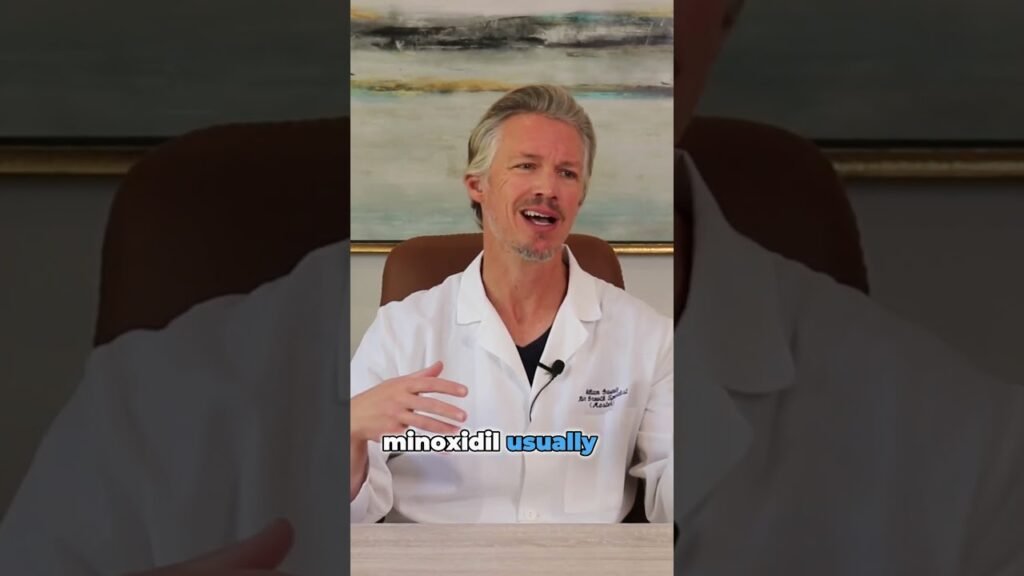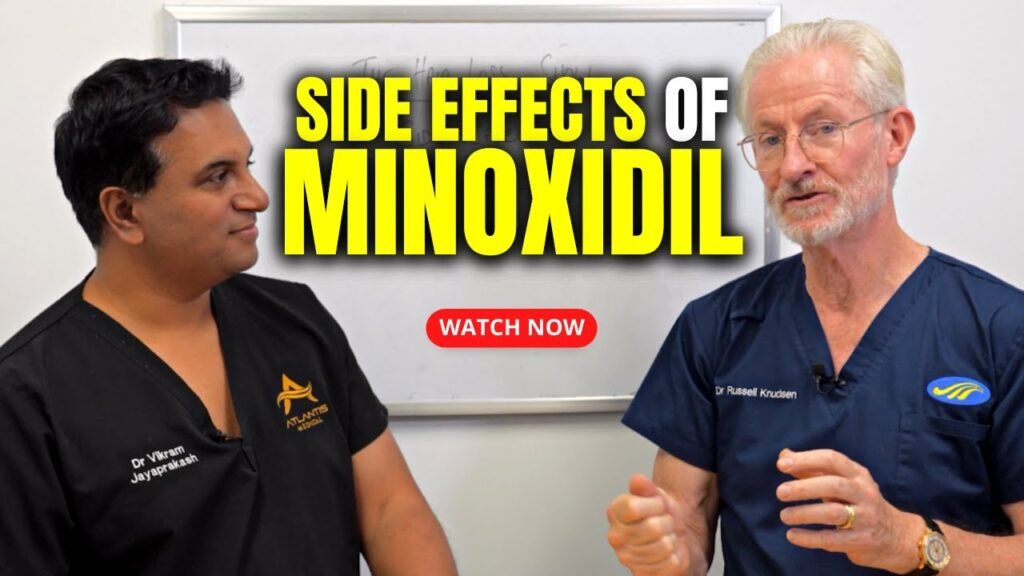Understanding Minoxidil and Its Side Effects
Minoxidil is a popular topical medication widely used for treating hair loss and promoting hair regrowth. Originally developed as an oral medication for hypertension, it was discovered that one of its side effects was increased hair growth, leading to its formulation as a topical treatment for conditions like androgenetic alopecia. Minoxidil works by stimulating hair follicles, increasing blood flow to the scalp, and extending the growth phase of hair, making it a go-to solution for many individuals experiencing thinning hair.
Common Side Effects of Minoxidil
While minoxidil is generally well-tolerated, users may experience some side effects. Common side effects include scalp irritation, dryness, and itching. These symptoms are typically mild and can often be managed with the use of moisturizing shampoos or conditioners. Some users may also notice an increase in hair shedding when they first begin treatment. This is usually temporary and is often considered a sign that the medication is working, as it pushes out weaker hairs to make way for stronger ones.
Less Common and Serious Side Effects
In rare cases, individuals using minoxidil may experience more serious side effects. These can include unwanted facial hair growth, changes in hair color or texture, and dizziness. Its important to apply the product only to the scalp to minimize the risk of unwanted hair growth on other parts of the body. If you experience severe side effects like chest pain, rapid heartbeat, or swelling of the hands and feet, its crucial to seek medical attention immediately. Always consult with a healthcare professional before starting any new treatment to ensure it is safe and appropriate for your specific condition.
Identifying Chest Pain Linked to Minoxidil Use
Minoxidil, a popular medication primarily used to treat hair loss, can sometimes lead to unexpected side effects, including chest pain. Recognizing chest pain related to minoxidil use is crucial for ensuring patient safety and effective treatment management. While chest pain is a less common side effect, it is important for users to be aware of this possibility and understand how to identify it.
Common Symptoms of Chest Pain from Minoxidil
Users of minoxidil may experience chest pain that can range from mild discomfort to severe, sharp pain. The pain might be localized to one area or radiate across the chest, sometimes extending to the shoulders, neck, or arms. Its essential to distinguish this pain from other types of chest discomfort, such as that caused by heartburn or muscle strain. If the chest pain is accompanied by symptoms like shortness of breath, dizziness, or palpitations, it may indicate a more serious reaction to the medication.
Steps to Take if You Experience Chest Pain
If you suspect that your chest pain is linked to minoxidil use, it is important to take immediate action. First, stop using the medication and monitor your symptoms closely. Seek medical attention if the pain persists or worsens, or if you experience additional symptoms such as fainting or severe breathlessness. A healthcare professional can assess whether the chest pain is indeed related to minoxidil and advise on the appropriate course of action, which may include discontinuing the drug or switching to an alternative treatment.
Effective Strategies for Coping with Minoxidil-Induced Chest Pain
Experiencing chest pain as a side effect of minoxidil can be concerning, but there are effective strategies to manage and mitigate this discomfort. First and foremost, it is crucial to consult with a healthcare professional if you experience chest pain while using minoxidil. They can provide personalized advice and determine whether minoxidil is the right treatment for you. In some cases, adjusting the dosage or switching to an alternative medication may alleviate the symptoms.
Monitor and Adjust Dosage
One of the primary strategies for coping with minoxidil-induced chest pain is to monitor and potentially adjust the dosage. Sometimes, the standard dosage may be too potent for certain individuals, leading to adverse effects such as chest pain. A healthcare provider can guide you in reducing the dosage gradually, which might help in minimizing side effects. Always follow your doctors instructions when adjusting medication to ensure safe and effective treatment.
Incorporate Lifestyle Changes
Incorporating certain lifestyle changes can also help in managing chest pain associated with minoxidil. Engaging in regular, moderate exercise can improve cardiovascular health and reduce the risk of side effects. Additionally, maintaining a balanced diet rich in heart-healthy nutrients can support overall well-being and potentially lessen chest discomfort. It is advisable to avoid smoking and excessive alcohol consumption, as these can exacerbate chest pain and negatively impact cardiovascular health.
Lastly, stress management techniques such as deep breathing exercises, meditation, or yoga can be beneficial. Stress can sometimes amplify the perception of pain, so finding effective ways to relax and manage stress can play a crucial role in coping with minoxidil-induced chest pain.
When to Seek Medical Help for Minoxidil Chest Pain
Minoxidil is a popular medication used to treat hair loss, but it can occasionally cause side effects, including chest pain. Understanding when to seek medical help for minoxidil-induced chest pain is crucial for your safety. If you experience chest pain after starting minoxidil, its important to monitor the intensity and duration of the pain. Mild, brief discomfort may not always require immediate medical attention, but if the pain persists or intensifies, it is advisable to consult a healthcare professional as soon as possible.
Certain symptoms accompanying chest pain may indicate a more serious issue. If you experience any of the following, you should seek emergency medical care immediately:
– Shortness of breath
– Pain radiating to the arms, neck, jaw, or back
– Dizziness or lightheadedness
– Sweating or clammy skin
These symptoms could signal a cardiovascular problem that requires urgent evaluation and treatment. Do not ignore these signs, as they may be indicative of a heart attack or other serious conditions.
Additionally, if you have a history of heart disease or are taking other medications that affect your cardiovascular system, you should be particularly vigilant about any chest pain experienced while using minoxidil. In such cases, it is prudent to have a preemptive discussion with your doctor about the potential risks and to establish a plan of action should chest pain occur. Regular follow-ups can help ensure that any adverse effects are caught and managed early.
Alternative Treatments for Hair Loss: Exploring Options Beyond Minoxidil
While Minoxidil is a popular choice for treating hair loss, many individuals seek alternative solutions due to potential side effects or personal preferences. One such alternative is low-level laser therapy (LLLT), which has gained traction for its non-invasive approach. LLLT uses red light wavelengths to stimulate hair follicles, encouraging hair growth by increasing blood flow and cellular activity. Devices like laser combs and helmets make this technology accessible for home use, offering a convenient option for those looking to explore treatments beyond traditional medications.
Another promising alternative is platelet-rich plasma (PRP) therapy. This treatment involves drawing a small amount of the patients blood, processing it to concentrate the platelets, and injecting it into the scalp. The growth factors in the platelets are believed to promote hair follicle health and stimulate growth. PRP therapy is often used in conjunction with other treatments and is praised for its natural approach, as it utilizes the bodys own resources to combat hair loss.
For those interested in more natural solutions, herbal supplements and essential oils offer a different avenue. Ingredients like saw palmetto, pumpkin seed oil, and rosemary oil have been studied for their potential to support hair health. Saw palmetto, in particular, is believed to block the conversion of testosterone to dihydrotestosterone (DHT), a hormone linked to hair loss. While research is ongoing, many individuals incorporate these natural remedies into their hair care routines, seeking a holistic approach to hair loss treatment.


